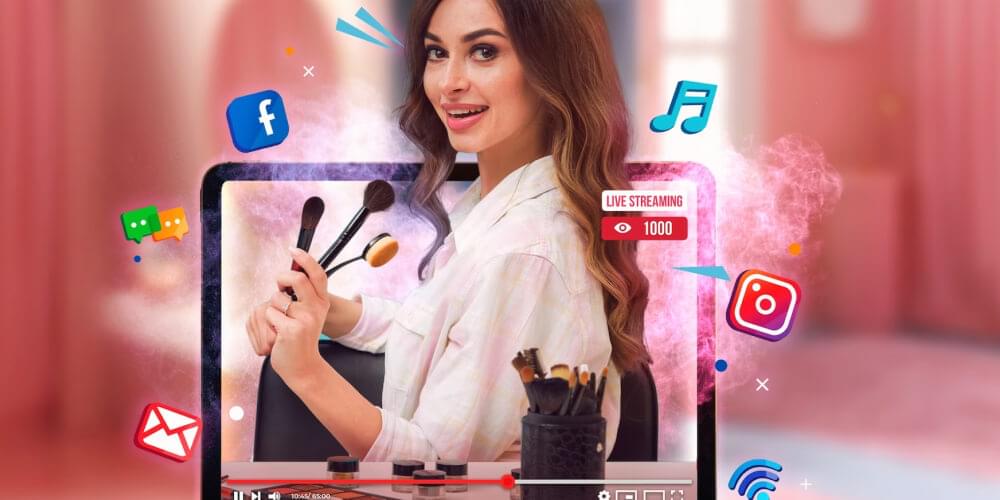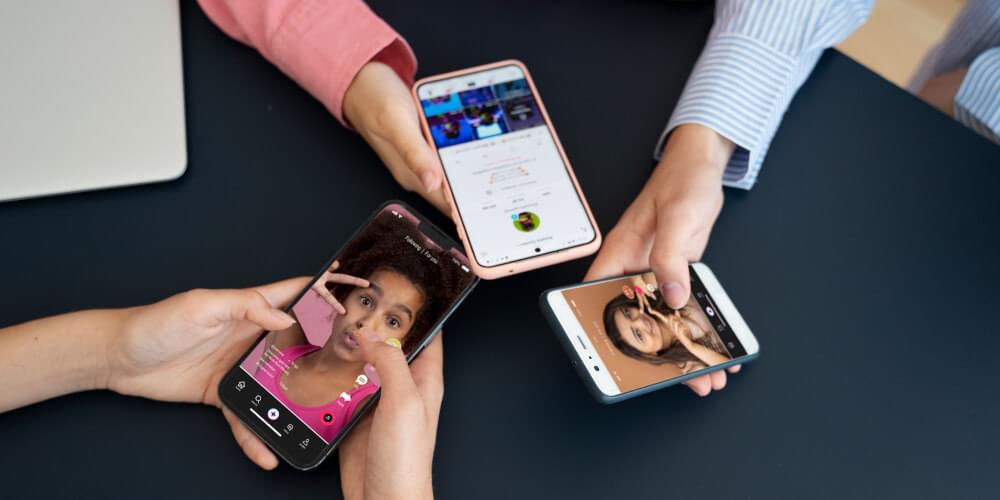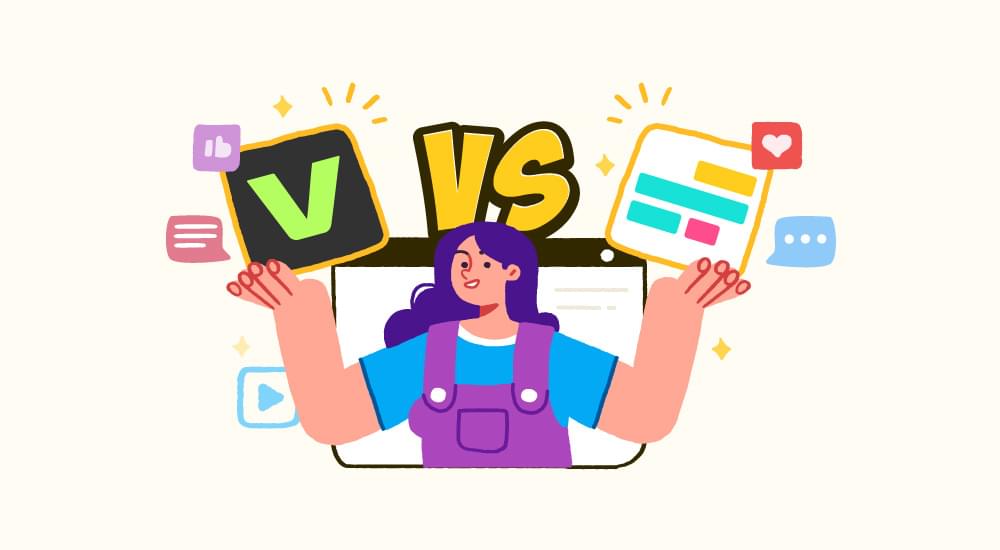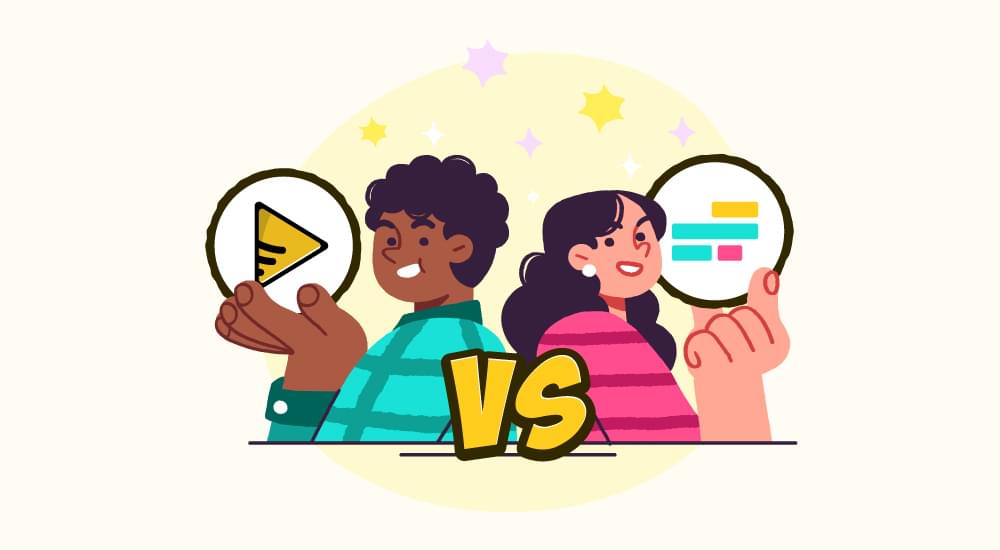
benefits of subtitles in video
Exploring TikTok Subtitles: The Rise of Video Captions and Viral Transcriptions
We’ve all been there: You’re casually swiping through your For You Page on TikTok, and suddenly, a video with someone talking pops up. You’re curious about what they say, but no captions can help you. Plus, your headphones are nowhere in sight, so you keep scrolling.
Now, if you’re a content creator or a social media marketer, this isn’t the kind of experience you’d want your followers to go through. To really grab people’s attention, your content needs to be accessible to everyone. And that’s where TikTok subtitles, or auto-captions, step in.
TikTok introduced auto-captions to make the platform more inclusive for people who are deaf or hard of hearing. But these short video captions can be a fantastic tool to improve the overall TikTok experience for everyone.
Understanding Auto Subtitling

Can you find anyone who does not use social media nowadays? No, right?
Therefore, capturing your audience’s attention on highly dense social media is a top priority. And one of the ways to do just that is by making your content as accessible as possible. Auto subtitling is a technology that is changing how we engage with videos on platforms like TikTok.
How Auto Subtitling Works on TikTok
Auto subtitling has become a popular feature on TikTok, a platform known for its short-form, attention-grabbing videos. It’s super easy! When a creator enables this feature, TikTok’s algorithm automatically generates subtitles based on the spoken words in the video. These TikTok subtitles are then displayed at the bottom of the screen, allowing viewers to follow along with the content even when they can’t listen to the audio.
Benefits of Auto Subtitling for Content Creators

Now, let’s dive into why auto subtitling is not just a feature for inclusivity but also a smart move for content creators.
Enhanced Accessibility for Deaf and Hard-of-Hearing Communities
TikTok introduced auto-captions in 2020, making content on the platform more accessible to the deaf and hard-of-hearing community. Auto subtitling has empowered people within these communities to engage fully with TikTok’s diverse range of content. It has enabled them to enjoy entertainment and access informative and educational content that would otherwise be inaccessible.
Furthermore, auto subtitling on TikTok has created a sense of belonging. Users who are deaf or hard of hearing now have the opportunity to participate in TikTok’s vibrant community, share their own stories, and contribute to the platform’s rich content.
According to the World Health Organization, more than 1.5 billion people worldwide have trouble hearing, and 430 million have a severe form of hearing loss. Auto subtitling ensures that your content is accessible to a broader audience. This inclusivity broadens your reach and shows your commitment to making content considerate of diverse audiences.
Increased Engagement
According to Facebook, videos with captions or subtitles can have a 12% increase in watch time compared to those without. Viewers who understand your content are more likely to engage with it. Whether they’re watching in a noisy environment, during a meeting, or just prefer reading, subtitles keep them hooked. This increased engagement can lead to more likes, shares, and follows for your TikTok account.
Improved SEO and Discoverability
Search engines can’t watch or listen to videos but can index text. TikTok subtitles provide more textual content for search engines to analyze, potentially improving your discoverability.
Subtitled videos are not only more engaging but also more SEO-friendly. Search engines like Google and TikTok’s search feature can index the text in your subtitles, making it easier for users to find your content when searching for related keywords.
Adherence to Platform Preferences
TikTok itself encourages subtitles, noting that they improve content quality and accessibility. TikTok recognizes the value of subtitles, and the platform actively promotes their use. By auto subtitling, you align your content with TikTok’s guidelines and recommendations, increasing the visibility of your videos in user feeds and on the ‘For You Page.’
Auto subtitling is not just a tool for TikTok accessibility; it’s a strategy for content creators to boost engagement, widen their audience, and align with platform preferences.
TikTok’s Journey to Prominence
TikTok, the short-video sensation that has taken the world by storm, has a remarkable journey that has reshaped social media.
TikTok originated in China in 2016 under the name Douyin. It was launched internationally as TikTok in 2017. Since then, its rise has been nothing short of meteoric. As of September 2021, TikTok had over 2 billion downloads globally, making it one of the most downloaded apps in history.
TikTok’s unique format of short, engaging videos attracted users of all ages, and it quickly became a cultural phenomenon. The platform’s algorithm, which serves a continuous stream of content designed to your preferences, played a significant role in its growth.
User Demographics and Global Reach

TikTok’s appeal is remarkably broad. It’s not just for teenagers; users of all ages, from Gen Z to Baby Boomers, have found a home on the platform. TikTok reached over 100 million monthly active users in the United States in 2021.
Beyond demographics, TikTok’s global reach is astounding. It has transcended borders and languages, fostering a sense of connection and cultural exchange. TikTok is available in over 150 countries and 75 languages, making it one of the most globally accessible social media platforms.
TikTok’s Impact on Social Media

TikTok has influenced not only how we consume content but also how we create it. It has introduced a paradigm shift in content creation. TikTok’s short-form video content has increased user-generated content across other platforms, with Instagram and YouTube introducing their own short-video features.
TikTok has challenged the traditional notion of content creation. Its success has encouraged other social media giants to adopt similar short-form video features. This shift has democratized content creation, allowing anyone with a smartphone to become a content creator.
Viral Video Transcription
Adding short video captions to TikTok videos has been shown to increase engagement and watch time. TikTok’s influence extends to how videos are presented. Subtitles or captions, often used for viral video transcription, have become a standard feature on the platform. This not only makes content more engaging but also improves accessibility.
In short, TikTok’s journey from humble beginnings to global prominence is a testament to its unique appeal and cultural impact.
The Role of Auto Subtitling in Making Content Accessible
Auto-subtitling, also known as closed captions, automatically generates text-based subtitles synchronizing with the spoken words in videos. This technology ensures that video content becomes comprehensible through audio and written text, enhancing TikTok accessibility for a wider audience.
Auto subtitling serves multiple purposes:
- Inclusivity: It caters to people who are deaf or hard of hearing, ensuring they can access and enjoy multimedia content.
- Language Barriers: Auto subtitling facilitates content consumption for those who may not understand the video’s spoken language, enabling a global audience to engage with content.
- Noisy Environments: TikTok subtitles allow viewers to follow the content without sound in noisy environments with compromised audio clarity.
- Improved Comprehension: It helps better comprehend content for people with cognitive or learning disabilities.
- Broadened Audience: Auto subtitling ensures that content is accessible to a broader audience, including those who prefer or require subtitles. This inclusivity inherently expands a creator’s reach.
- Enhanced Engagement: Subtitled videos are more likely to capture and retain viewers’ attention. Viewers with limited attention spans can be hooked longer with short video captions.
- Improved SEO: Search engines index the text in TikTok subtitles, enhancing a video’s discoverability.
- Global Appeal: Creators can connect with a global audience, breaking language barriers. This opens doors to international collaborations and fan bases.
In 2020, TikTok’s auto caption feature generated over 60 billion views for videos with viral video transcription.
Experiences and Feedback from TikTok Content Creators
TikTok has transformed countless people into content creators, each with their unique journey. Let’s explore how creators are using TikTok auto subtitling.
Meet Jacelyn Fincher
Jacelyn, a 20-year-old student at Gallaudet University, is breaking barriers for deaf and bisexual communities. Her TikTok is all about sharing funny and relatable moments from her life. With 1.3 million followers, her channel, @jacelyn.fincher, is a delightful mix of content styles.
Discover Scarlet Watters
Scarlet, a native of Washington D.C., lost her hearing at three but gained a passion for sign language. She’s a strong advocate for closed captioning on TikTok. She has 4.4 million followers and is one of the most popular Deaf TikTok creators. Catch her videos at @scarlet_may.1.
Introducing Andy Pleasants
Meet Andy, a 21-year-old political science student at the Rochester Institute of Technology. He describes himself as “talkative nonverbal” and uses his TikTok platform, @andyispleasants, to advocate for the Deaf community and challenge misconceptions about facial differences. Join his journey and connect over shared experiences with his 353,000 followers.
Challenges and Limitations of TikTok Auto Subtitling
Auto subtitling has undoubtedly brought about a revolution in short video captions and TikTok accessibility. However, like any technology, it comes with its challenges and limitations. While auto subtitling is a valuable tool, it’s not without its imperfections. Accuracy remains a prominent concern. Let’s see these issues:
- Misinterpretation of Speech: Auto subtitling may misinterpret spoken words, leading to inaccuracies in the generated subtitles. Accents, dialects, and rapid speech can pose challenges.
- Background Noise: These noises can interfere with the accuracy of auto subtitling, making it difficult to generate subtitles that reflect the intended content.
- Homophones and Ambiguities: Words that sound similar but have different meanings (homophones) or phrases with multiple interpretations can confuse auto-subtitling algorithms.
To address these challenges and improve the accuracy of auto subtitling, content creators can turn to auto-subtitle generators. These tools come equipped with advanced speech recognition algorithms that provide precise subtitles for short videos.
Auto-subtitle generators have significantly improved subtitle accuracy, with some achieving error rates below 5%. One notable advantage of an auto-subtitle generator is its built-in canvas for TikTok and other platforms. This makes integration easy, allowing content creators to improve accessibility without a steep learning curve.
The Future of Auto Subtitling on TikTok
As we’ve explored short video captions, TikTok accessibility, and viral video transcription, we must look into the future and anticipate how auto subtitling on TikTok can evolve. Let’s dive into advancements in auto subtitling technology, features and improvements, and the broader implications for the future of video content.
Potential Features and Improvements
The future of auto subtitling on TikTok holds promising developments:
Real-Time Customization: Content creators may gain the ability to customize auto-generated subtitles in real-time during video creation, ensuring precision and creativity.
Advanced Editing Tools: Enhanced editing tools could empower creators to add emphasis, style, and personalization to their subtitles, making content more engaging.
Multi-modal Subtitling: Auto subtitling may evolve to include additional information, such as emojis, annotations, and visual cues, enhancing the viewer’s experience.
Implications for the Future of Video Content
Auto subtitling’s evolution on TikTok and other platforms will have far-reaching consequences:
Increased Accessibility: As auto subtitling becomes more accurate and customizable, it will continue to make video content accessible to a more extensive and diverse audience. Auto-subtitle generators are expected to become more user-friendly, with intuitive interfaces and enhanced integration capabilities.
Global Reach: Content creators will reach global audiences effortlessly, creating cross-cultural connections and collaborations.
Innovative Storytelling: Enhanced subtitling features will encourage creators to experiment with innovative storytelling techniques, adding depth to short-form content.
It’s a Wrap!
In these advancements, the role of auto-subtitle generators becomes even more critical. These tools will continue to bridge the gap between content creators and accurate, engaging subtitles. Their user-friendly interfaces and easy integration with platforms like TikTok will empower creators to enhance accessibility and inclusivity without technical expertise.
In a nutshell, auto subtitling on TikTok is on an exciting trajectory of growth and improvement. Advancements in technology promise greater accuracy, customization, and creativity. These developments will not only expand TikTok accessibility but also revolutionize how content creators engage with their audiences. As the future unfolds, auto-subtitle generators will remain valuable in making video content accessible and captivating to all.
Add and translate your subtitles to more than 100 languages with high accuracy












